Collaboration
Content collaboration done right: a practical guide for marketers and creatives
July 2025
10 mins
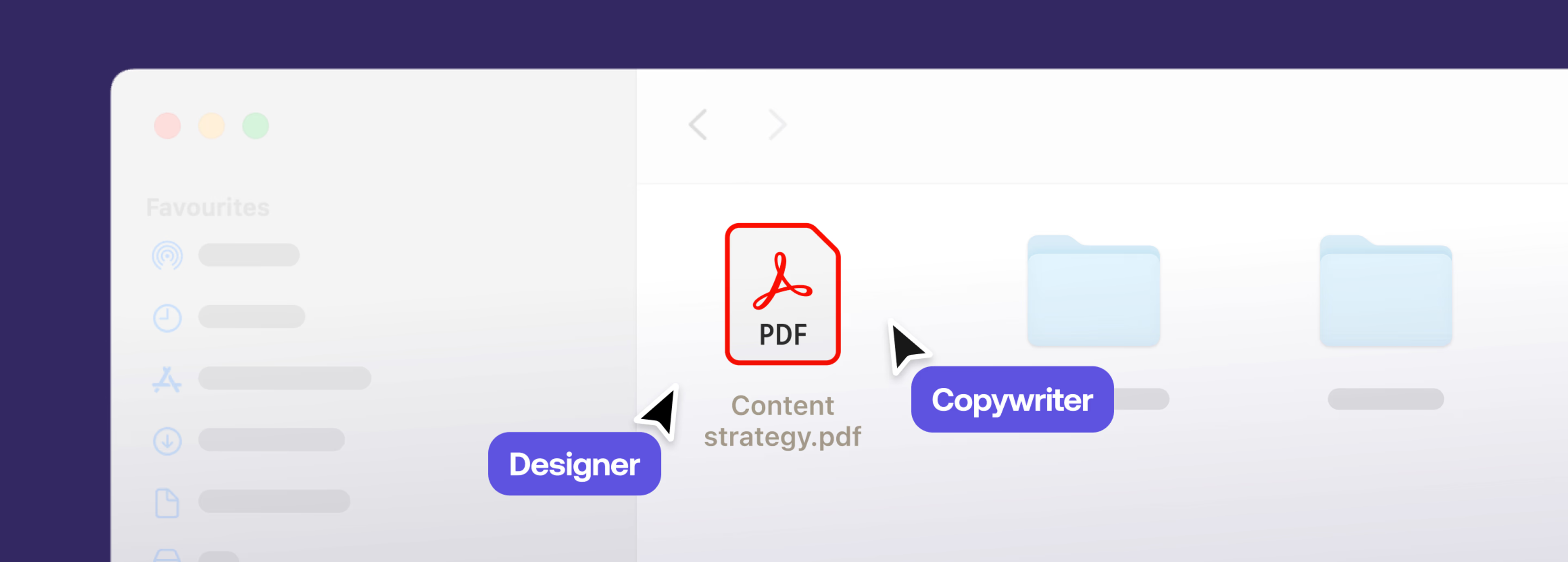
Table of contents
- The pain of disorganized content collaboration
- The real costs of poor content collaboration
- 10 best practices for effective content collaboration
- What to look for in content collaboration tools
- 6 top content collaboration tools
- Why content collaboration is easier with LucidLink
- Don’t let slow content collaboration hold you back
Your files, faster.
Access any file instantly, anywhere. Collaborate in real-time from one always-up-to-date, secure cloud filespace.
Content collaboration with your team is meant to make life easier. But for many creative and marketing teams, it just slows you down.
Instead of building momentum, you’re constantly disrupted by admin, tools and confusion that get in the way of work:
You can’t find the actual file you need to get started
You’re making edits, but you’re not sure it’s the right version
Feedback is buried in email chains or scattered across apps
Another status call interrupts your flow before you’ve even hit your stride
The issue isn’t teamwork. It’s the lack of structure behind how your team collaborates. In this guide, we’ll break down practical ways to make content collaboration smoother and more effective. So your team can work faster, together.
The pain of disorganized content collaboration
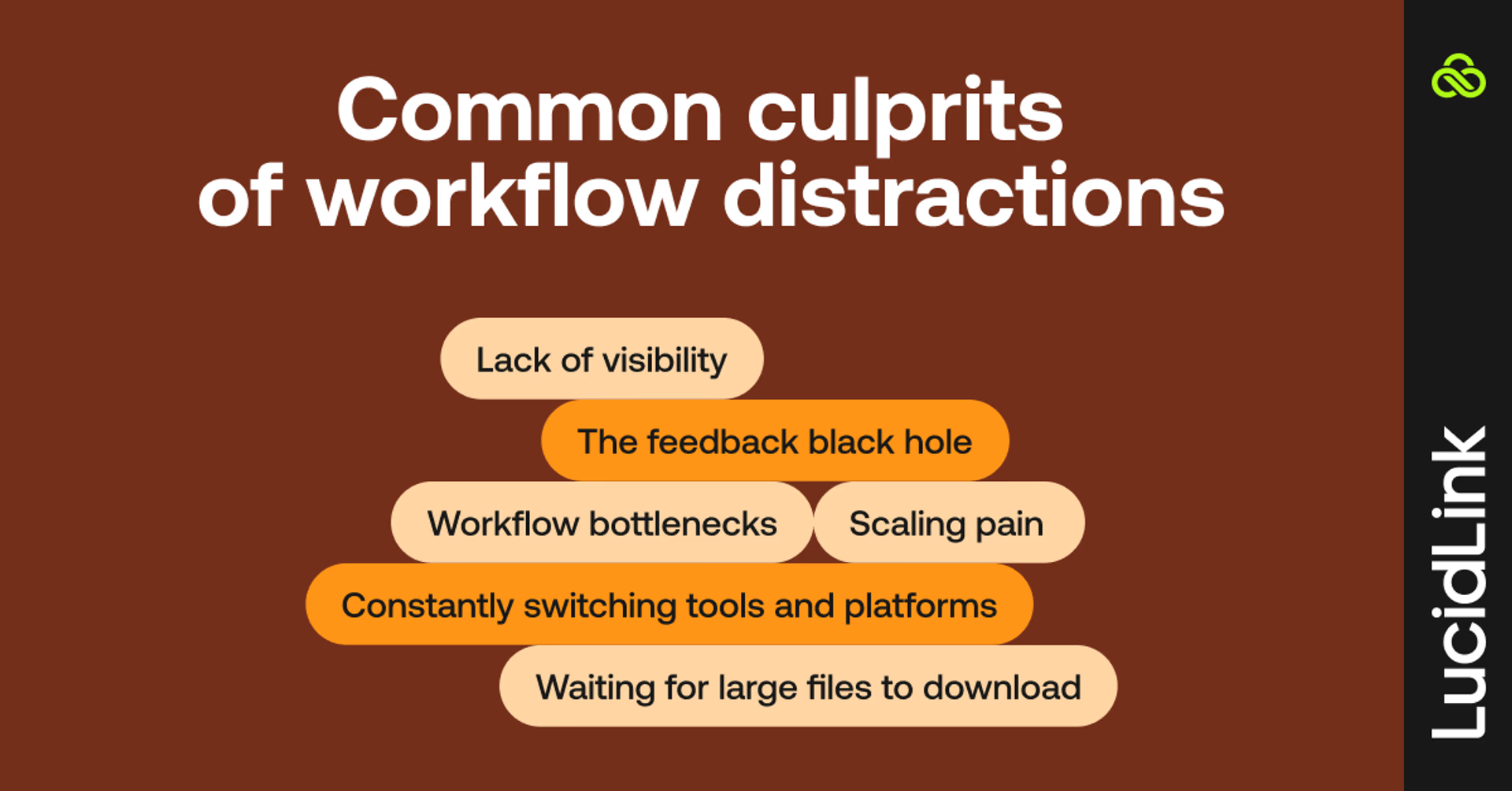
We all know the joy of being in the zone. When the hours fly by and the work just flows.
But you also know the pain of being ripped from that state by all manner of mundane distractions. And when you’re pulled out of the flow, it’s hard to get back in.
Here are a few common culprits:
Waiting for large files to download when your energy is freshest (right at the start)
The hassle of receiving large files via slow, clunky transfers that break your creative momentum
Constantly switching tools and platforms, which slows you down and kills focus
Lack of visibility on the latest changes, so your team drifts off-course
Workflow bottlenecks caused by unclear ownership and endless approvals
The feedback black hole, where centralized comments are MIA
Scaling pains when freelancers or agencies aren’t smoothly onboarded
All these interruptions chip away at your momentum. As we’ll see, streamlining them into a cleaner content collaboration workflow doesn’t just improve output, it protects creative time and saves money.
The real costs of poor content collaboration
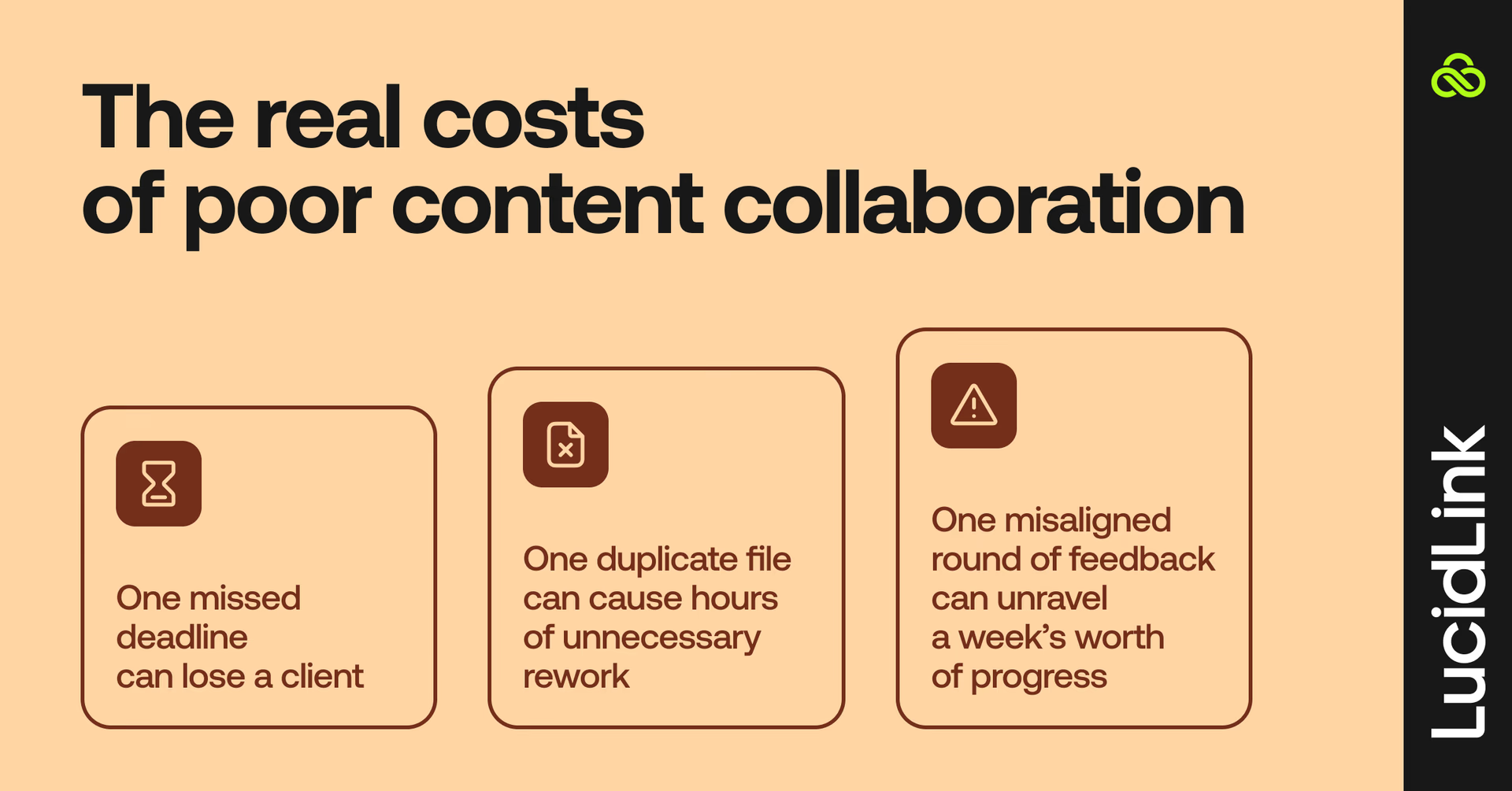
Bad content collaboration doesn’t just cost time. It costs momentum, morale and money. And those costs scale fast.
Think about it:
One missed deadline can lose a client
One duplicate file can cause hours of unnecessary rework
One misaligned round of feedback can unravel a week’s worth of progress
Now multiply that across 10 projects, 5 clients and 3 time zones. It adds up.
Top talent isn’t cheap — and neither is wasted effort. When teams are spending more time on file admin than deep work, your budget’s leaking in all directions.
Long term, the impact is real:
Burnout and churn from frustrated teams
Siloed systems that slow down every new project
Opportunity cost from work that never reaches its full potential
You can see just how much this costs in real terms with our quick workflow calculator.
Savings calculator
Every second counts
See exactly how much time and money your team could save with LucidLink.

So how do you make harmonious content collaboration actually happen?
Yes, tools matter. But it’s your overall workflow — not just your software — that shapes your results.
No platform alone will fix messy processes or poor communication. These content collaboration best practices will help you lay the groundwork for a creative workflow that flows.
10 best practices for effective content collaboration
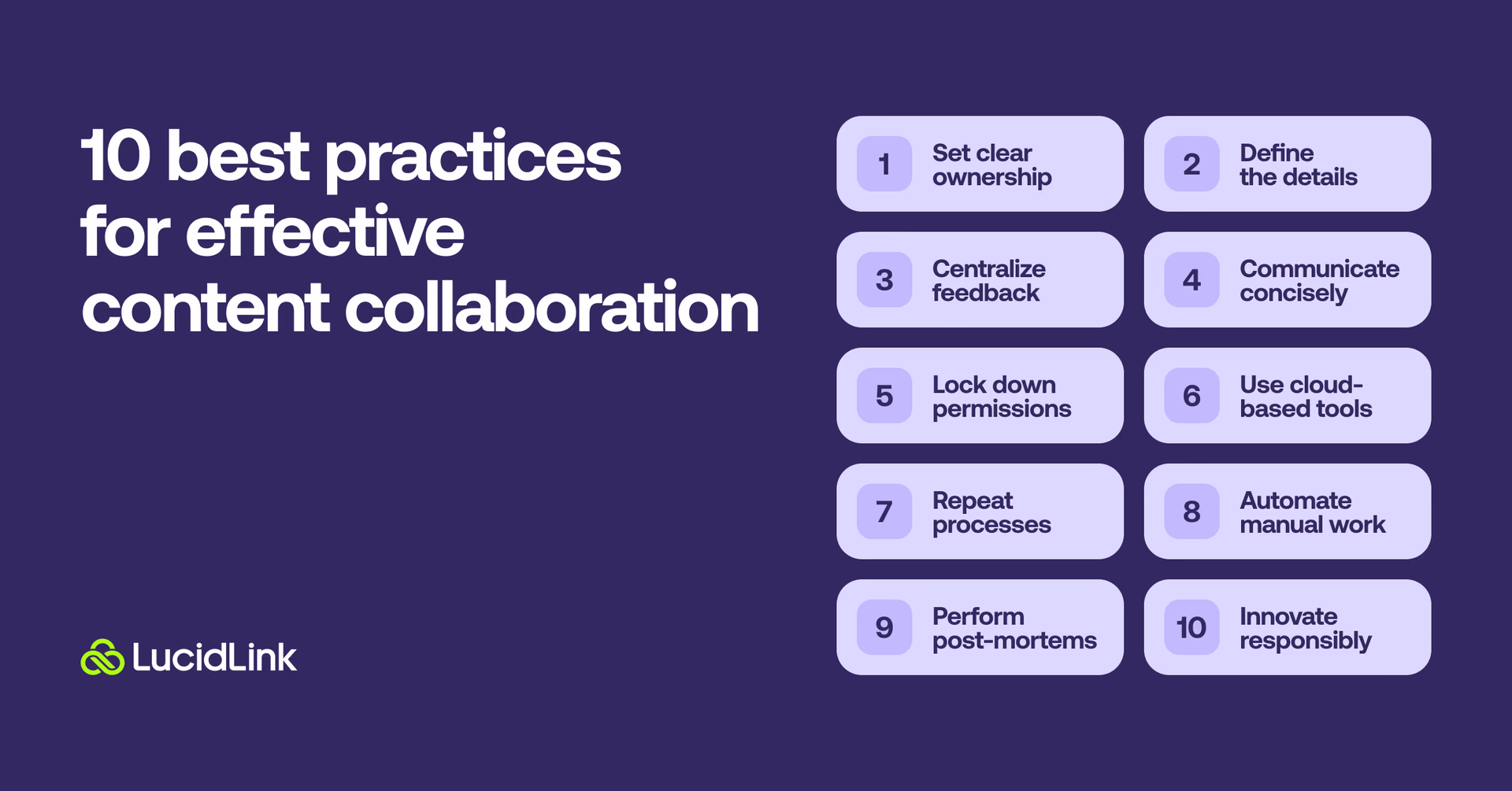
So how do you make harmonious content collaboration actually happen?
Yes, tools matter. But it’s your overall workflow — not just your software — that shapes your results.
No platform alone will fix messy processes or poor communication. These content collaboration best practices will help you lay the groundwork for a creative workflow that flows.
1. Set clear ownership
Define who owns each stage of content production.This will make it clear to everyone who is responsible for keeping the team on task and for signing off on key decisions at every point along the way.
2. Define the details
Write out the brief, deliverables list, production timeline and critical deadlines. Putting this in writing as a shared document will start everyone from an aligned position and give your team a chance to flag any initial issues.
3. Centralize feedback
Avoid confusion by keeping all comments, approvals and in-progress files in one shared space. Everyone sees the same thing, in real time.
4. Communicate concisely
Creative work needs focus. So keep messages short, clear and actionable. Resist the urge to overload Slack or inboxes with unnecessary chatter.
5. Lock down permissions
Control who sees and edits everything. This isn’t just about protecting sensitive IP from leaking, it also prevents inadvertent data loss and duplication.
6. Use cloud-based tools
Let your team work from the same source files, in real time. Cloud-first tools eliminate version issues, slow transfers and wasted back-and-forths.
The right online tools and collaboration platforms should save you more in time and effort than they ever cost you in monthly subscription costs.
7. Repeat processes
There’s no need to reinvent the wheel once you’ve smoothed off the rough edges. Once your process runs smoothly, repeat it. A consistent workflow saves time, builds team habits and helps capture what worked last time.
8. Automate manual work
As you’re following a repeatable process, any time and effort invested in automating frequent steps that otherwise require a lot of manual labor (like client media ingest, metadata tagging, batch deliverable creation, etc) will pay dividends every time you use the automation in the future.
9. Perform post-mortems
After every project, conduct a brief ‘post-mortem’: what went well? What needs to be improved next time? What could be automated next and which parts of your repeatable process need tweaking or updating?
Taking the time to do this will have a positive influence on every subsequent project.
10. Innovate responsibly
Despite sticking to a repeatable process, times change. Keep one eye on the latest AI developments, creative tools and collaborative platforms to see whether switching to a new solution could dramatically improve your content collaboration workflow.
Test each new element to see whether the gains will outweigh the switching costs.
What to look for in content collaboration tools
Once your content creation process is solid, you can add the right content collaboration software to take it up a level.
Here are a few key elements you should look for in content collaboration platforms.
Real-time access: content collaboration works best when everyone can work on the same file at the same time (regardless of size). For creative teams, this is table stakes.
Cloud-first workflow: store all your files, versions and feedback in one centralized location online, creating a single source of truth. Find storage (like LucidLink) that removes the delays and duplicate effort from unnecessary uploading, downloading, syncing and file management tasks.
The cloud also comes with major benefits like infinite scale, lower cap-ex costs and superior processing power when you need it. Check out this piece on time savers vs. time wasters for more workflow upgrades.Version control: avoid the cost and confusion of storing duplicate files in multiple places and ensure everyone is working on the latest version at all times.
Backup and history: protect your essential data with no extra effort by letting the platform’s servers back up your files for you. You should be able to track file changes and chain of custody while also having the option to revert to previous versions if needed.
Seamless integrations: your tools should work where you do. Whether that’s Adobe, Slack or Google Workspace, choose software that plugs neatly into your existing toolkit.
Cross-platform compatibility: any tool you choose needs to function across all operating systems, devices and browsers to ensure that it works everywhere and for everyone. This shouldn’t be a problem for most current solutions, but it’s the kind of hurdle you don’t need to be surprised by.
Automation features: even simple functions such as notifications of status updates during approval feedback, offer a rigorous way to speed up your collaborative content creation workflow.
Flexible permissions & security: managing your team’s access to workspaces, projects, folders and individual files should be intuitive and simple to action. This fine-grain level of control ensures the right people have access to the files they need and that access can be revoked when they no longer need it.
AI-enhancements: plenty of platforms throw the AI term around. Focus on features that actually save you time or improve output. For example, smart tagging, auto-transcriptions or search enhancements.
Pricing that scales: your tools should grow with your team, and your ambitions. Look closely at per-seat pricing, pay-per-use extras and how costs stack up at scale.
6 top content collaboration tools
Now that you know what to look for, what are the best content collaboration tools out there today? Whether you're managing campaigns, creating videos or keeping teams in sync, these tools are a good place to get started.
1. LucidLink
Best for: real-time storage and collaboration
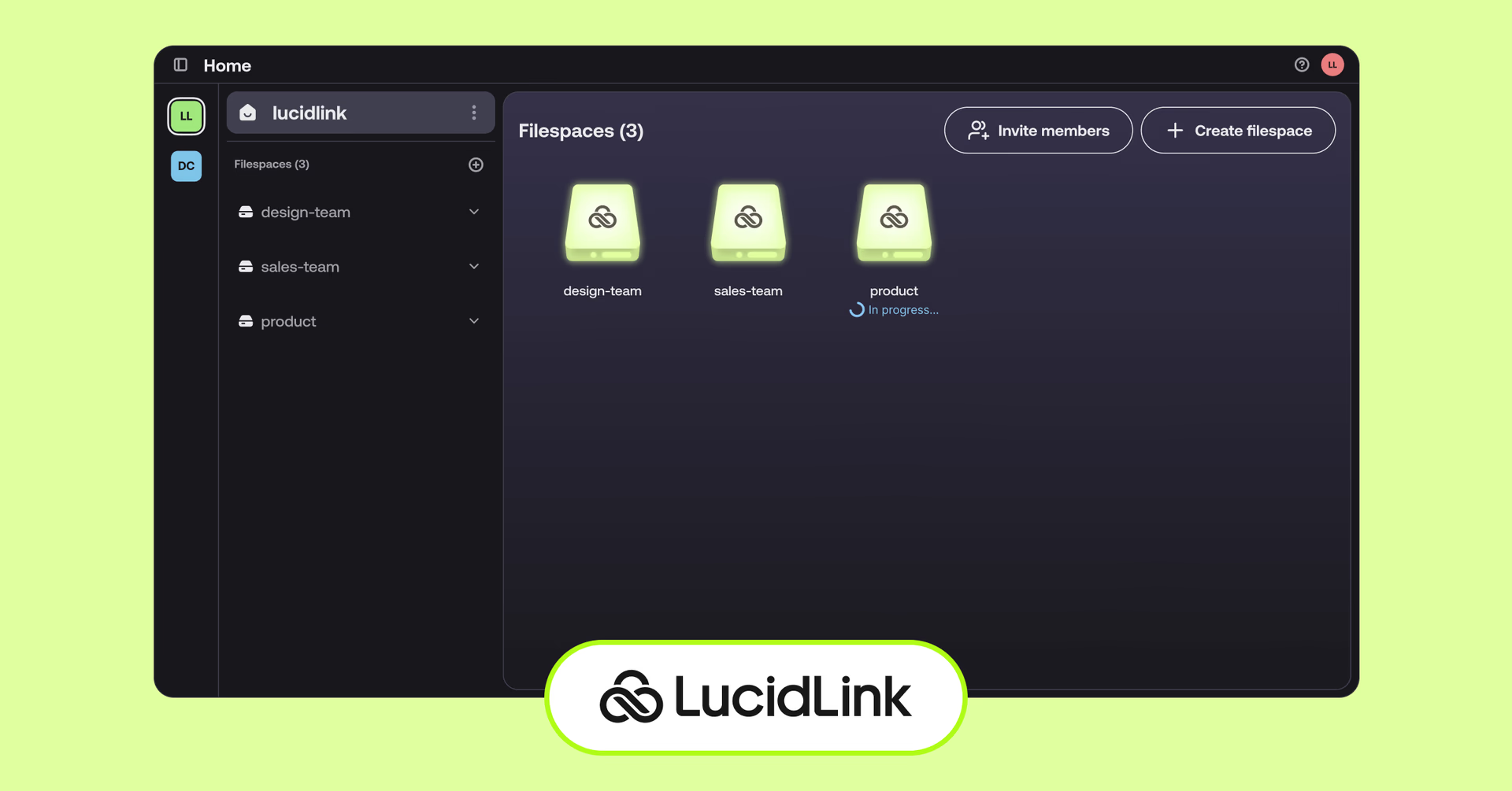
Access, edit and collaborate on large files instantly and securely from anywhere — without downloading or syncing. Built for teams that work with huge datasets over distance.
2. Frame.io
Best for: video review and approval

Centralize feedback and approvals on video projects with timestamped comments, version control and team workspaces.
3. Notion
Best for: team wikis and project planning
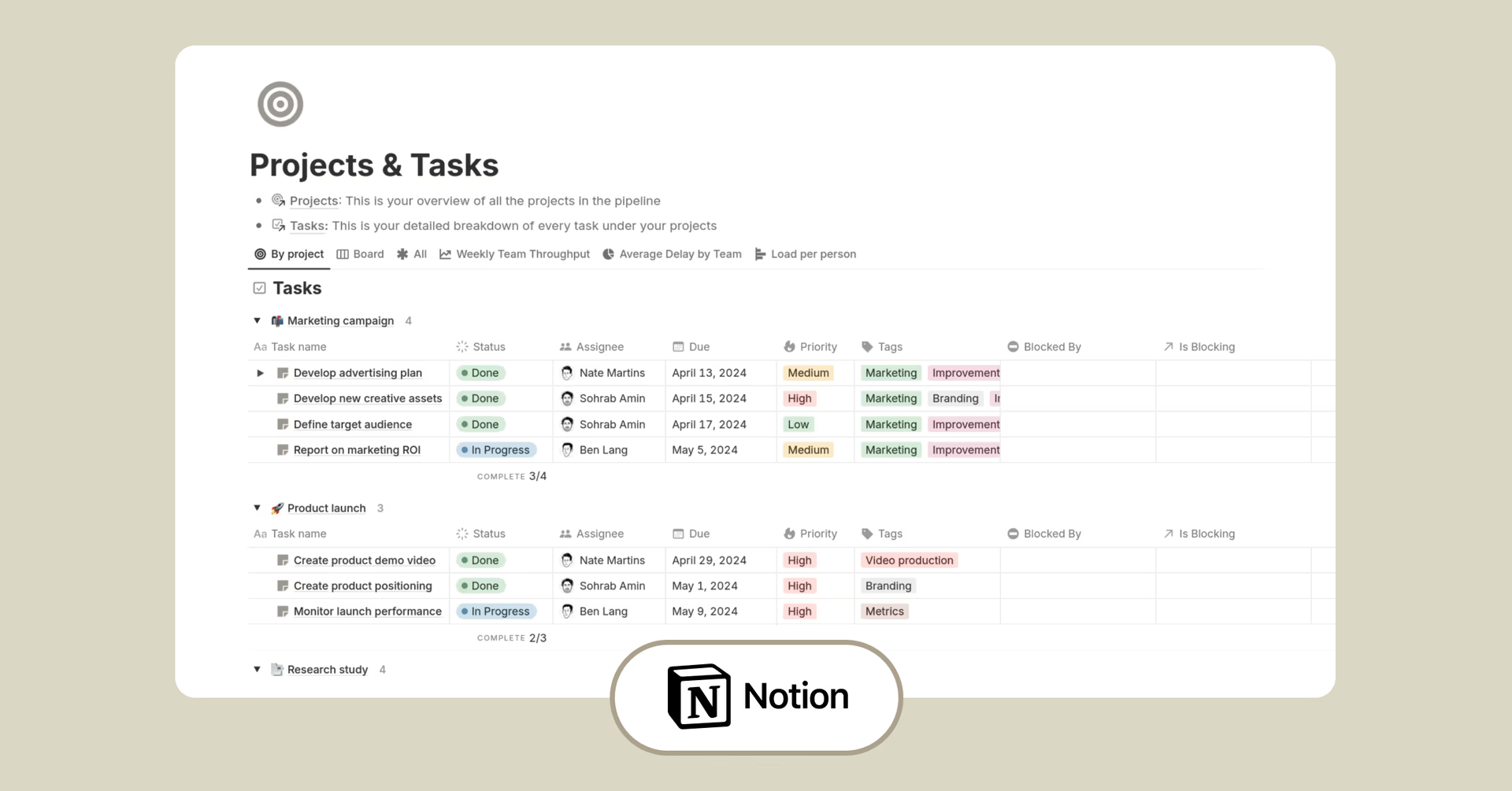
Build a single source of truth for your team — from campaign plans to meeting notes — with a flexible, collaborative workspace.
4. Asana
Best for: project management at scale
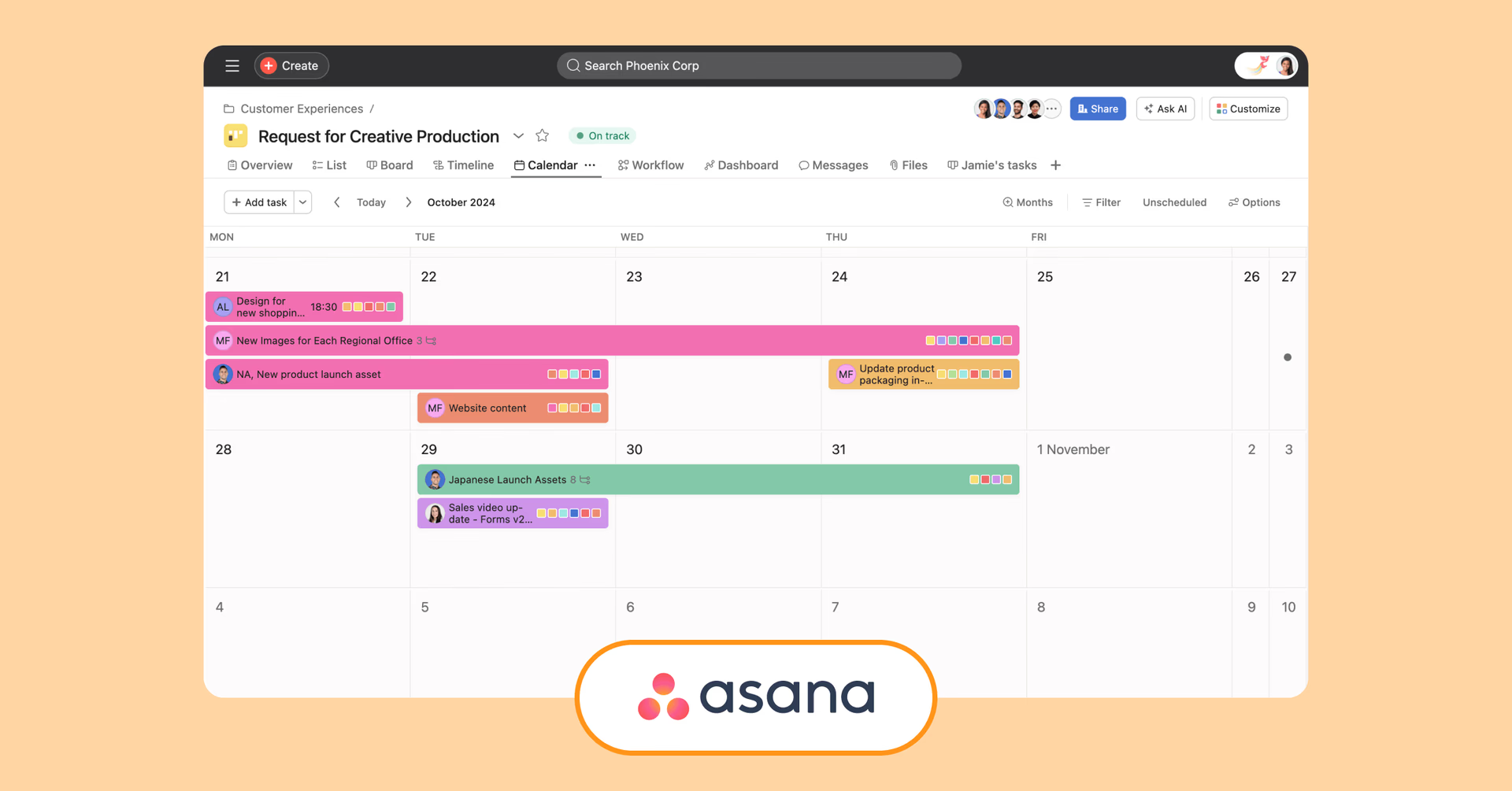
Plan, assign and track content tasks with timelines, automations and reporting — great for larger marketing and content ops teams managing detailed marketing asset management workflows.
5. Figma
Best for: collaborative design workflows
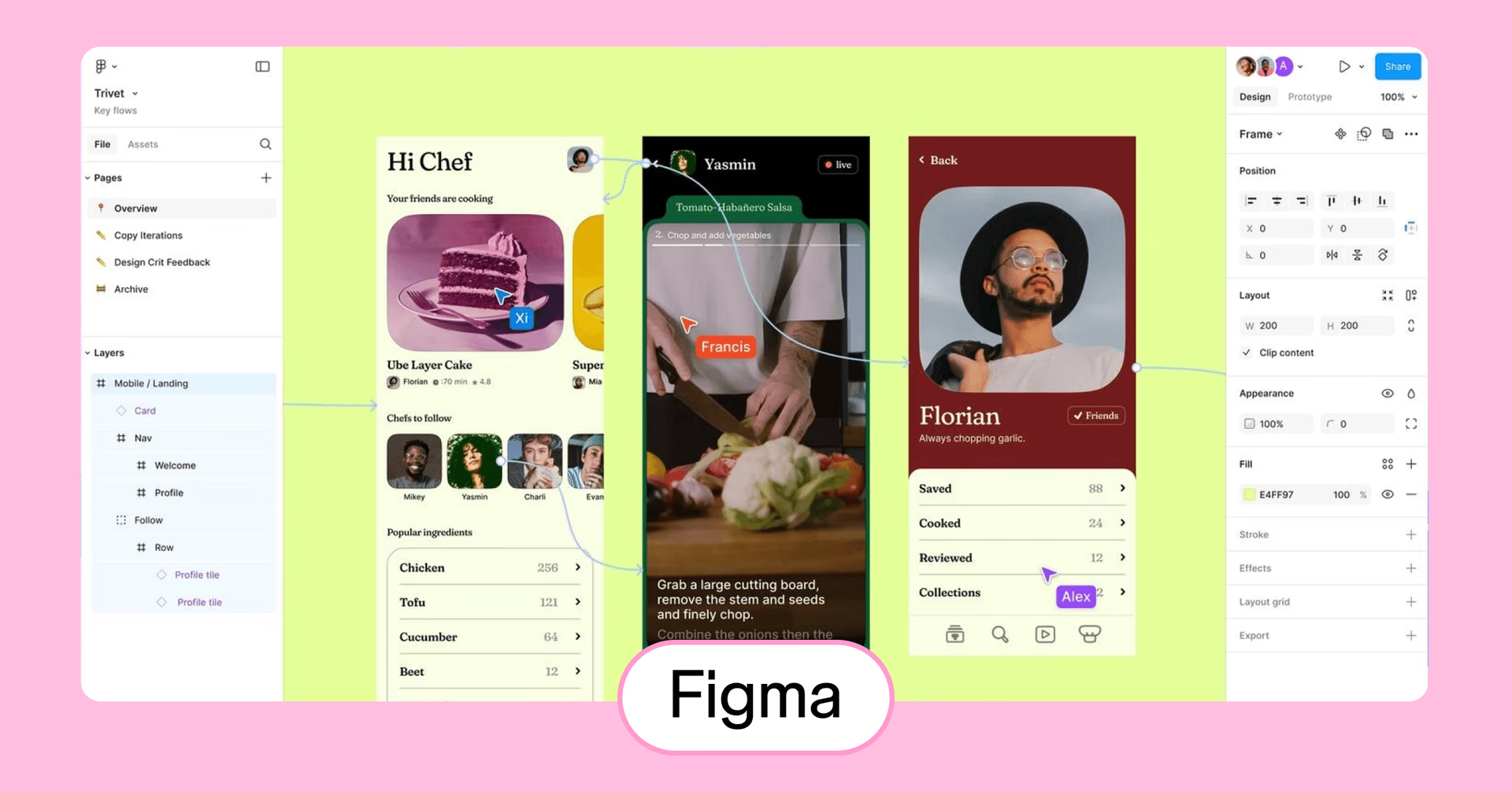
Create, review and iterate on design projects in real time — complete with version history and developer handoff tools.
6. Miro
Best for: brainstorming and ideation
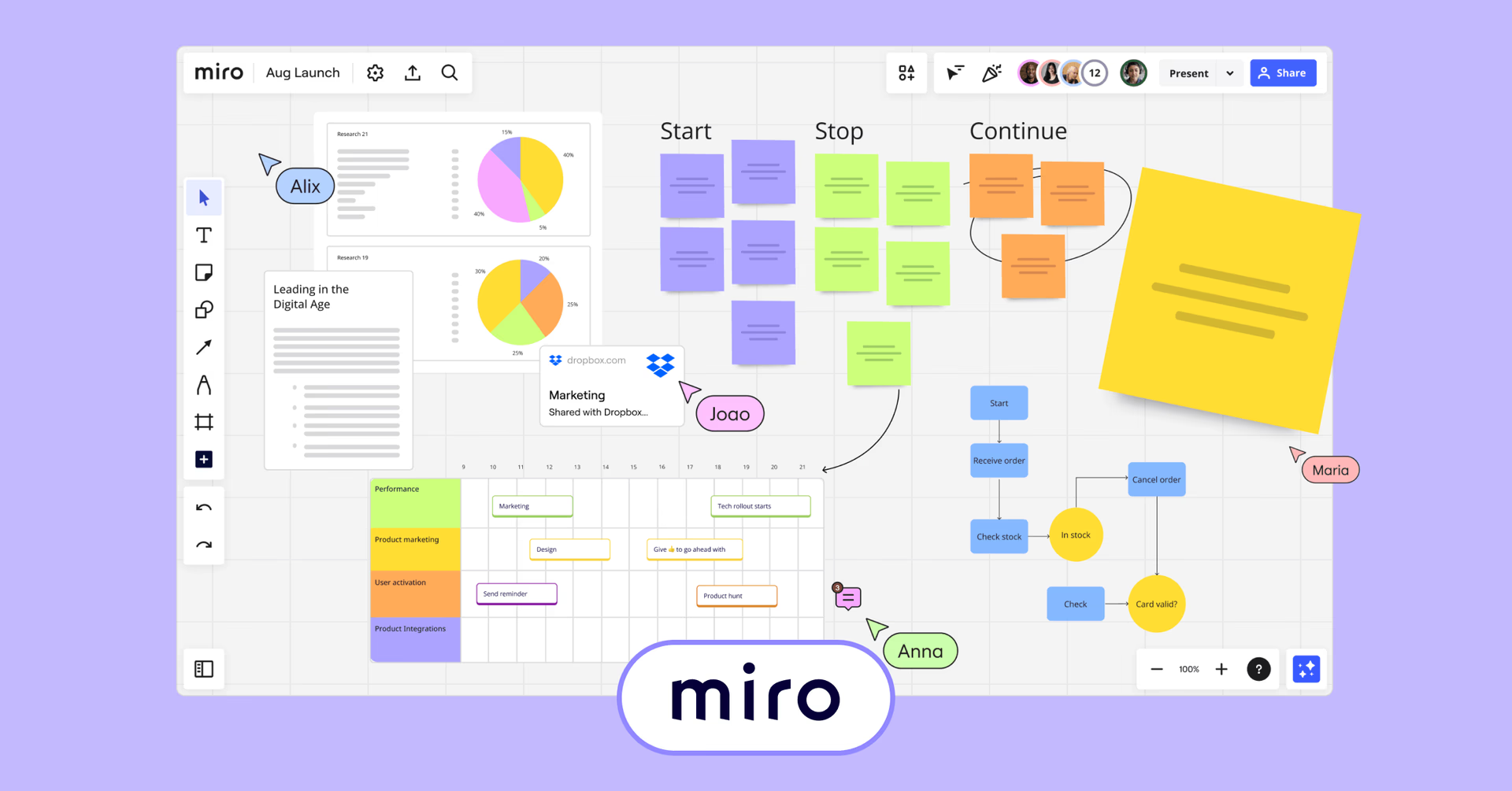
Capture ideas and collaborate visually on a digital whiteboard, ideal for kick-offs, sprints and async brainstorms.
Take a deeper dive on all best content collaboration tools here:
Why content collaboration is easier with LucidLink
We mentioned LucidLink above, but let’s go a little deeper into how our tech can help your team.
Using a cloud-based content collaboration platform like LucidLink as the backbone of your workflow will help you cut down wasted time, effort and budget.
Let us count the ways:
Everything in one place
LucidLink acts as your centralized, always-on storage hub. That means:
No more uploading or downloading just to get started
Instant access to the files you need to maintain momentum
No more duplicate files across systems
No more confusion over which version is current
It’s easy to expand access, too — just a couple of clicks and new users are good to go. With everyone working from the same filespace, your team stays aligned, in sync and moving fast.
Easy onboarding
The beauty of working with LucidLink is that it works like a familiar local drive (even though we’re doing some magic under the hood).
This means expanding your team with in-house or remote talent doesn’t require pausing to walk them through the complexities of a new system, configure intricate network permissions or wait around for IT to dole out user permissions.
A low technical overhead helps to make the most of everyone’s time and energy.
Your data is secure
Enterprise-grade security and zero-knowledge encryption ensures any sensitive IP or proprietary data is protected from prying eyes. Even LucidLink can’t access your files.
Yet our easy-to-use user management interface makes it simple to assign and control the filespace, folder or specific file access permissions of an entire team or individual creative.
This makes onboarding new talent quick and painless, with all the control you need to revoke access once the project is complete.
You can even toggle on detailed audit logs to track changes, chain of custody and more.
Snapshots
Mistakes happen. It makes sense to be prepared.
Our automatic filespace snapshots capture previous versions of all your files in case of accidental deletion, previous version recovery or the need to audit changes over time.
Integrated workflows
LucidLink has powerful integrations with essential applications like Adobe Indesign, Photoshop, Premiere Pro and After Effects, so your team doesn’t have to reinvent the wheel just to make the switch to LucidLink.
LucidLink also works seamlessly across multiple operating systems, web browsers and mobile platforms. So you can work, when, where and however you like.
Global performance
Thanks to our global network of data centers you can work with any and every file type, file size and bandwidth required to get the job done.
So whether you’re editing 8K raw video files in DaVinci Resolve, editing a multi-part high-end TV drama series in Adobe Premiere Pro or finessing hundreds of InDesign files, you won’t notice the difference thanks to our smart caching and pinning features.
Future-proof scalability
No more scrambling for more NAS storage. No more VPN headaches. No more surprise upgrade costs.
LucidLink scales as your needs grow. Whether you bring your own S3 storage or choose our bundled AWS egress-free storage, it’s easy to:
Expand capacity
Add users
Dial things down when projects wrap
All without downtime or extra hardware.
Don’t let slow content collaboration hold you back
If you’ve been nodding your head in agreement to these common bottlenecks, you’re not alone.
The good news? You can fix them.
Start by taking a step back. Look at how your team really works — what’s flowing smoothly and what’s slowing you down. Then build from there using the best practices we’ve covered.
Better yet, try LucidLink on your next project and see how smooth content collaboration can really feel.
Want to see it in action? Try LucidLink free for 30 days.
Keep reading
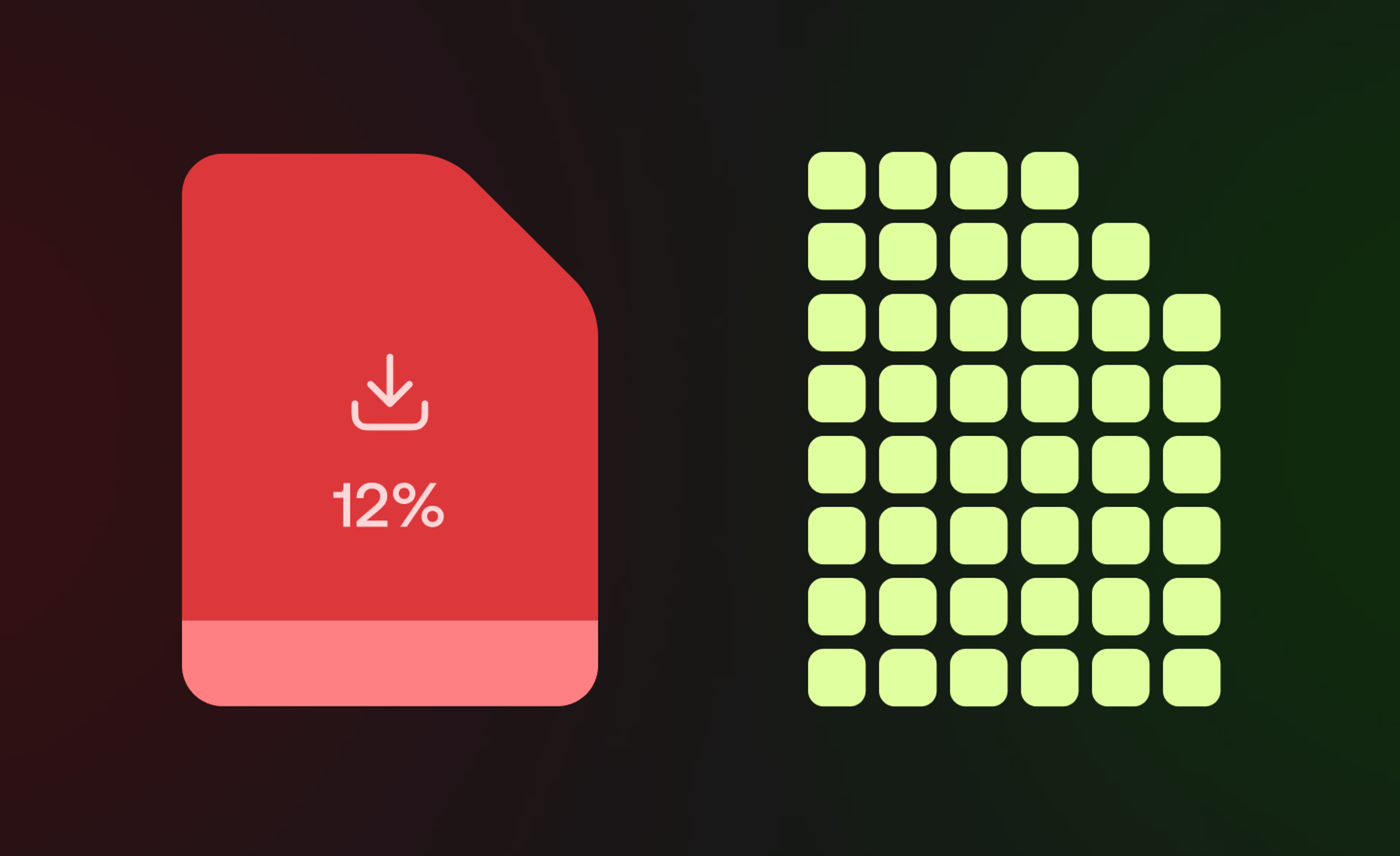
Product & news
Collaboration
Cloud storage
File streaming vs file acceleration: stop moving files
Discover where file acceleration solutions fall short for collaboration and how file streaming gives teams instant, direct access to cloud data from anywhere.
11 December 2025, 7 mins read

Product & news
Collaboration
Cloud storage
Why sync when you can stream? File streaming vs sync and share
Explore how sync and share tools disrupt large file workflows and how LucidLink’s file streaming platform delivers instant, secure file access from anywhere.
24 November 2025, 6 mins read

Collaboration
In the field
Madecraft’s post-production hacks for smooth workflows
Discover how Madecraft slashes hidden costs of post-production, boosting efficiency, saving time and keeping creativity flowing.
21 November 2025, 6 mins read
Join our newsletter
Get all our latest news and creative tips
Want the details? Read our Privacy Policy. Not loving our emails?
Unsubscribe anytime or drop us a note at support@lucidlink.com.